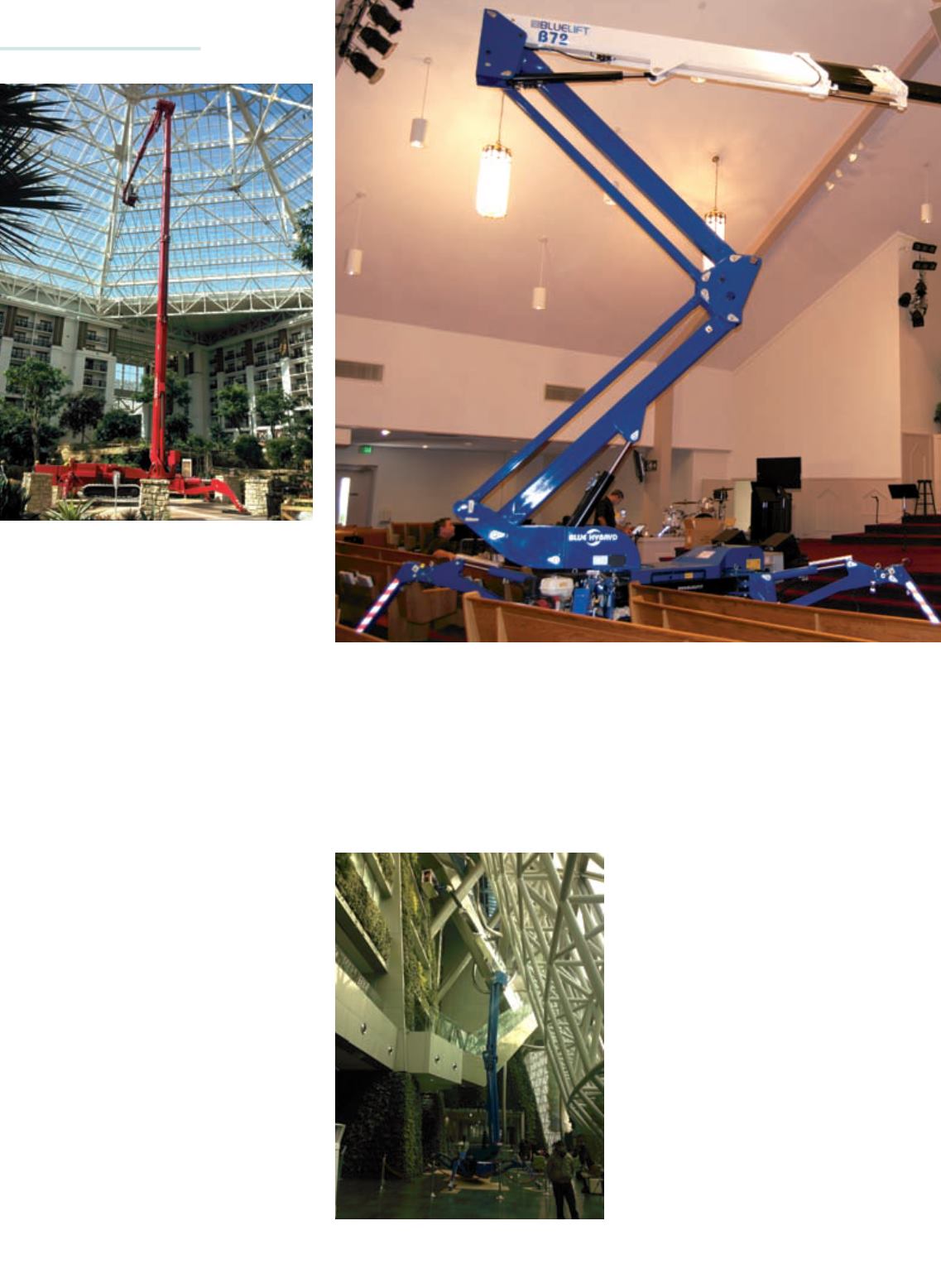
TRACK-MOUNTS
44
ACCESS, LIFT & HANDLERS
NOVEMBER-DECEMBER 2013
the Lightlift 17.75 Performance IIIS and
Lightlift 20.10 Performance IIIS with a 55-foot
and 65-foot (17 and 20 m) working height,
respectively.
“With the last two machines we have
increased capacity and they are much quicker,
compact and user friendly. Rental companies
also need reach and height, with, as in the
past, lower pressure on the ground with non-
marking tracks,” says Negri.
Both Hinowa machines offer 507 pounds
(230 kg) capacity, with up to two operators,
across the whole working area, a wide working
envelope at 24 feet (7.5 m) and 31 feet (9.7
m) continuous outreach for the 58 and 65
feet (17.75 and 20.10 m), respectively. The
machines are made of lightweight steel and
include bushings without grease designed for a
long life without lubrications - saving time and
money.
Rental gains
Gianpiero Marti, at fellow Italian manufacturer
BlueLift, thinks big rental companies will
embrace the tracked platform.
“For Scissors and self-propelled machines
rental rates are going down because there are
more competitors. The tracked platform will be
a way of moving out of this conflict and making
a profit.” Its latest model is the lightweight
58-foot (17.8 m) working height SA18. It offers
a 30.5-foot (9.3 m) outreach from a 9 foot by
9 foot (3 by 3 m) outrigger set up with one
person in the basket. It’s good for rental, the
company says, and can be transported on a
trailer.
As a result, BlueLift foresees tracked
platforms will make up 5 percent of the total
AWP market in the next three years.
But Palazzani’s export manager, Laura
Gasparini, is aware of the shortfalls of these
products. “The use of tracked platforms,
particularly the highest, requires the presence
of a specialist operator. So, Palazzani is
making significant innovations to its range to
make them easier to use than the previous
models, both in set-up phase and aerial work
operations.”
Ebbe Christensen, president of BlueLift
A ReachMaster Blue Lithium C22 at work.
A Tuepen LEO 40 GTX carries out high-end work.
and Falcon distributor ReachMaster, agrees.
“They are more nimble, more fragile; they do
take more training, because they have more
technology than booms or scissors,” adding,
“The secret behind a lot of those things is
CANbus; auto setting is certainly something
that is a big help, and safety features, for
example, if you change elevation while driving
by more than five degrees, the machine goes
down to half speed.”
Christensen adds, “I can has started to be
a major buyer in the U.S. because compact
39-foot to 72-foot (12 m to 22 m) track lifts
do all the things from a reach point of view of
scissors and booms in that range, but it’s a
much lighter, more versatile machine.”
“It’s almost like the tip of the iceberg – rental
have been reluctant because, but rental has
now finally seen that is easily outplayed by
gigantic applications being solved by other
machines in a less efficient and less safe way.”
Another general advantage, adds Christensen,
is delivery, where booms and often scissors
have to be delivered to site on multi-axle
trailers, tracked platforms can be transported
on smaller trailers.”
Some 50 percent of Reachmaster’s sales
currently go to rental companies. “I would not
be surprised if rental will become the most
dominant sector,” adds Christensen.
Great rental potential also lies in Europe says
Negri, “Since the recession rental companies
have been looking for alternative products, and


